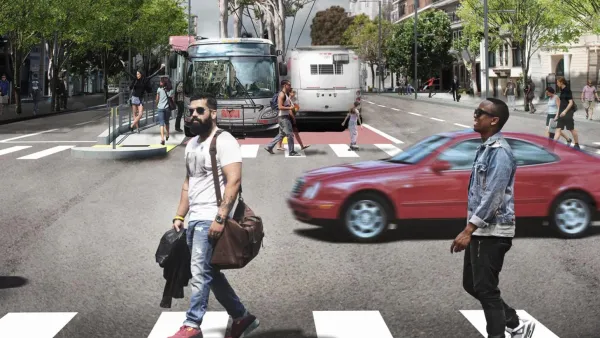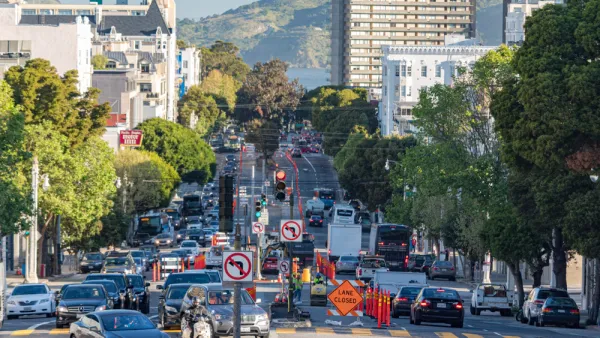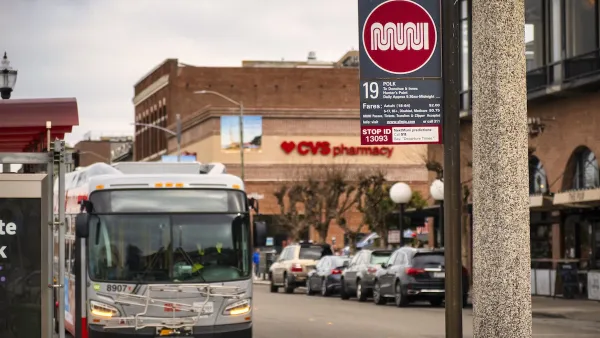The San Francisco rapid bus line is making transit on the corridor more reliable and reducing traffic crashes and congestion.

A Bus rapid transit (BRT) project in San Francisco earned the highest-level designation achieved by U.S. transit projects, Silver, by the Institute for Transportation and Development Policy (ITDP) for its effectiveness in improving transit travel times along the Van Ness corridor.
According to a press release from the city, “The Van Ness project includes dedicated center running transit lanes that don’t get slowed down by parking or turning vehicles, transit signal priority that gives buses the green light as they approach an intersection, as well as low-floor vehicles and all-door boarding, that make it quicker and easier for passengers to load and unload at each stop and fast and frequent operations.”
According to data from the SFMTA, “Bus travel on this corridor is now 36% faster, injury traffic collisions are down by 54%, and transit is 45% more reliable.” The project also added pedestrian bulbouts, countdown signals, and other infrastructure to make walking safer.
Raymone Garner, a Muni Operator of 23 years, said the BRT line “gives us a smoother ride that’s safer with better on-time performance. Riders love it because it’s easier for us to get into the bus zone so it’s easier and safer to pick up passengers, especially people with disabilities.”
The press release adds, “The other BRT Silver-designated projects in the nation include the New Britain Busway in Hartford, Connecticut and the Healthline in Cleveland, Ohio. California has two Bronze projects; the Orange (G) Line in Los Angeles and the sbX E Street Bus BRT in San Bernardino.”
FULL STORY: San Francisco's First Bus Rapid Transit Project Receives Internationally Recognized Designation

National Parks Layoffs Will Cause Communities to Lose Billions
Thousands of essential park workers were laid off this week, just before the busy spring break season.

Retro-silient?: America’s First “Eco-burb,” The Woodlands Turns 50
A master-planned community north of Houston offers lessons on green infrastructure and resilient design, but falls short of its founder’s lofty affordability and walkability goals.

Delivering for America Plan Will Downgrade Mail Service in at Least 49.5 Percent of Zip Codes
Republican and Democrat lawmakers criticize the plan for its disproportionate negative impact on rural communities.

Test News Post 1
This is a summary

Test News Headline 46
Test for the image on the front page.

Balancing Bombs and Butterflies: How the National Guard Protects a Rare Species
The National Guard at Fort Indiantown Gap uses GIS technology and land management strategies to balance military training with conservation efforts, ensuring the survival of the rare eastern regal fritillary butterfly.
Urban Design for Planners 1: Software Tools
This six-course series explores essential urban design concepts using open source software and equips planners with the tools they need to participate fully in the urban design process.
Planning for Universal Design
Learn the tools for implementing Universal Design in planning regulations.
EMC Planning Group, Inc.
Planetizen
Planetizen
Mpact (formerly Rail~Volution)
Great Falls Development Authority, Inc.
HUDs Office of Policy Development and Research
NYU Wagner Graduate School of Public Service





























